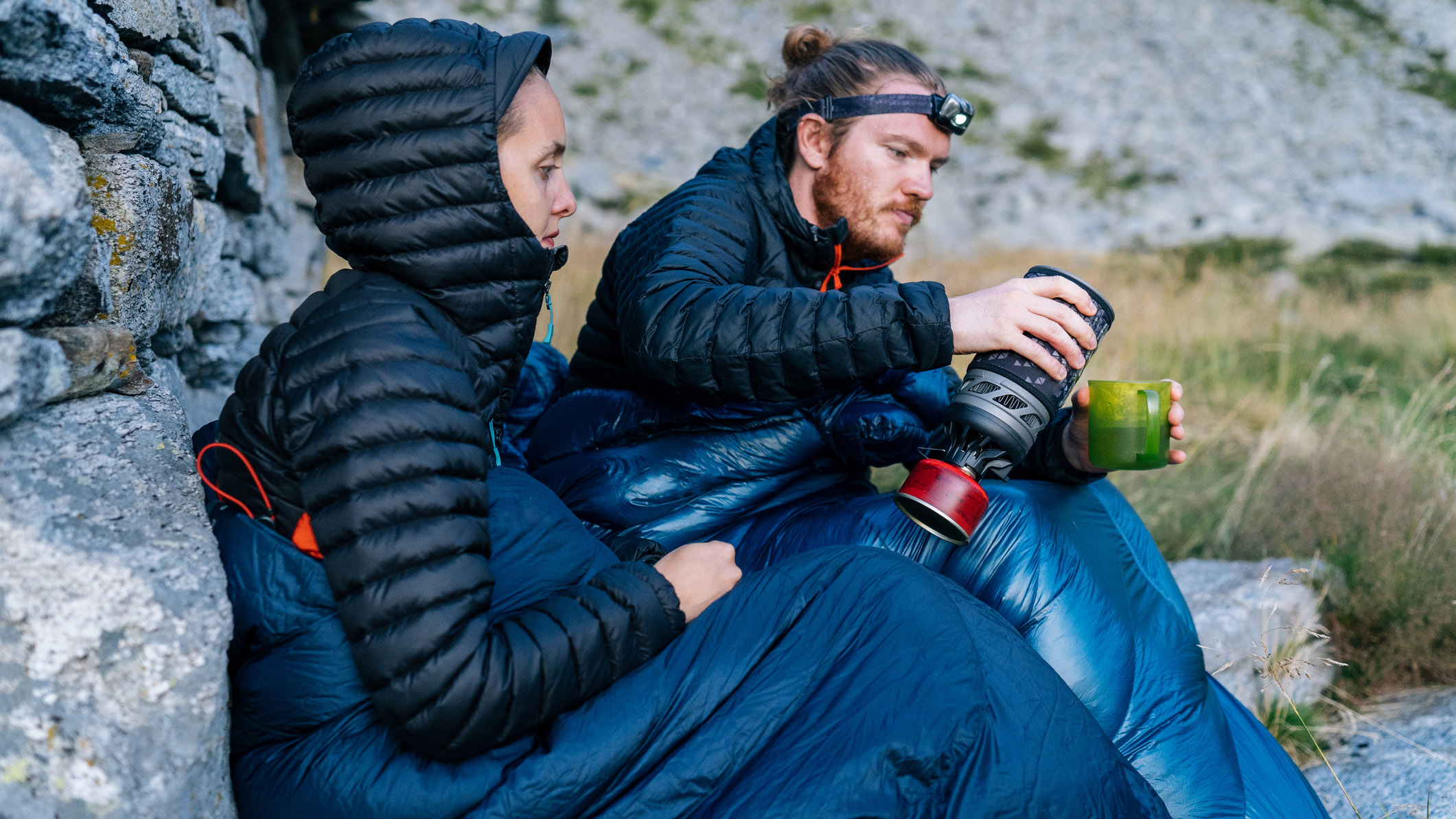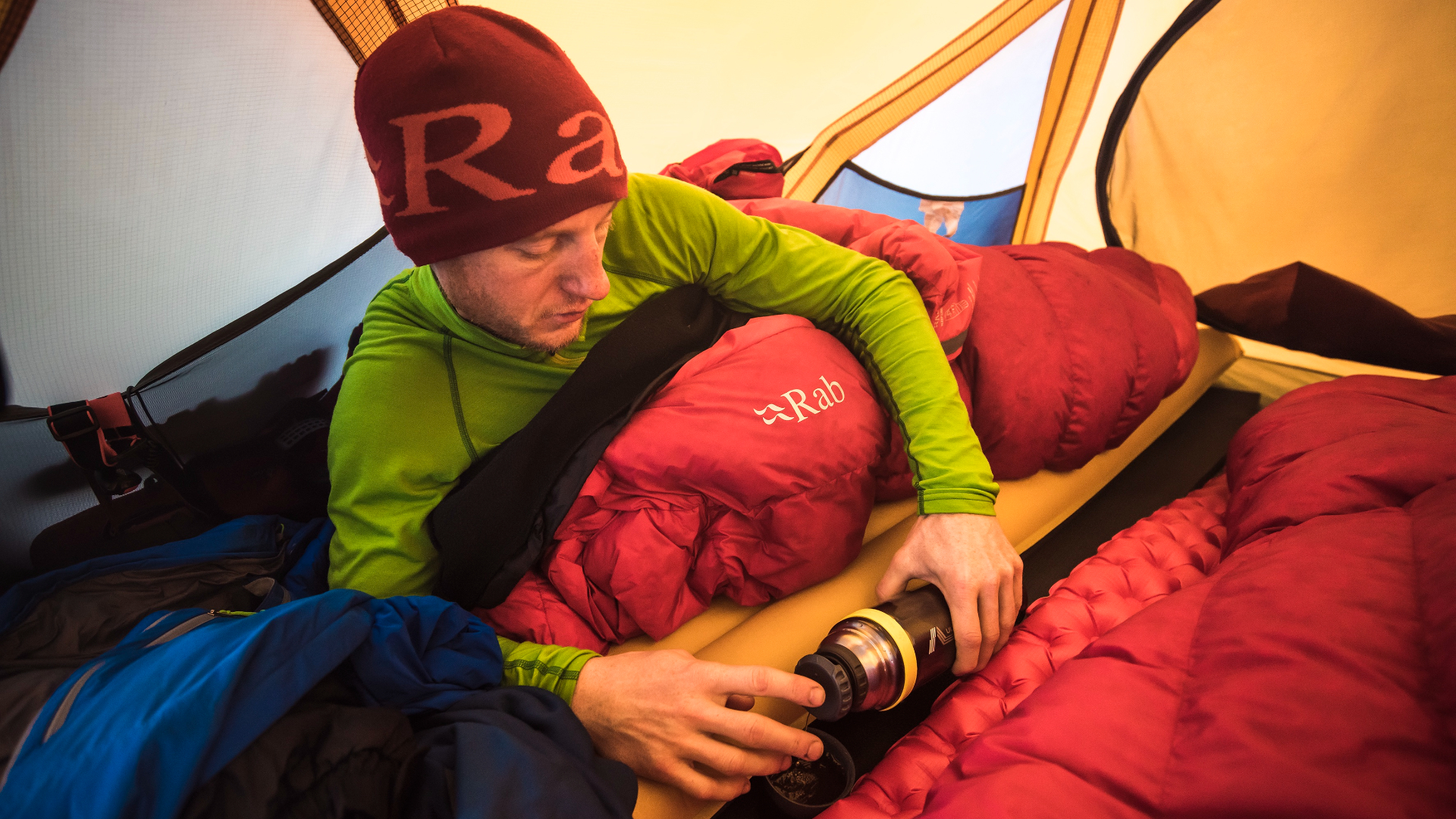How to wash a down jacket and other tips for keeping your puffer in top condition
Our guide to how to wash a down jacket, complete with handy tips on everything from proper storage, drying and repair for your puffer

Knowing how to wash a down jacket is going to be very important if you're planning lots of fun hiking or camping adventures this winter. Your puffer is one of your very best options for staying cozy in the harsh conditions out there. However, hikers are often nervous when putting their down jacket through the wash, unsure of exactly how to treat one of their most precious pieces of outdoor gear.
After all, they're likely to be among the most expensive bits of outdoor kit you ever buy, so it’s well worth protecting that investment by knowing how to look after a down jacket. Luckily, with a bit of regular care and maintenance, you can ensure your precious down gear lasts you for many years and multiple adventures.
Knowing whether it contains synthetic insulation, duck down or goose down is just the first step in knowing how to wash a down jacket. The best men's down jackets and best women's down jackets should come with precise care instructions, though our guide goes beyond simply washing, giving handy tips on drying, storage and repair too.

How to wash a down jacket
There are signs to look out for that it is time to wash a down jacket. If your down gear seems to have lost its loft, it’s likely that some of the down inside has either clumped due to dirt and grease or escaped altogether. Individual down clusters are fragile and easily get clogged with dirt, grease, sweat and body oils, all of which impair performance. This happens with sleeping bags too, and the methods used to wash a sleeping bag are similar to those used to care for a down jacket. With a down jacket, it is important to reproof the fabrics of your down jacket regularly to protect the fill.
Many people are reluctant to wash down items for fear of ruining their performance, which is often also the case with merino base layers and the like. People often think that down jackets are supposed to smell anyway. To a certain extent this is true, particularly with older down kit. Commercial down is sourced from ducks or geese, which does have a slight odour. And duck down tends to have a slightly more pronounced ‘bird’ smell than goose down. This comes from the fact that since duck down tends to be of a lower fill power and is therefore cheaper, it is generally cleaned less rigorously and is also frequently of a lower grade in terms of its down-to-feather composition. But improvements in down traceability and overall supply chain quality have meant that modern duck down products are of an extremely high standard, with next to no whiff of their wildfowl origins.
In the first instance, if your jacket picks up the odd mud splatter or similar, it’s better to spot clean it first with a damp cloth or sponge. However, if your down kit is causing your camping, hiking or climbing buddies’ noses to wrinkle, it may be time to wash it. But there’s no need to do this too often – maybe at the end of a hiking or climbing season, so a couple of times a year at most.

Though it can be done by hand, by far the easiest way to wash a down jacket is in a washing machine. Use a modern front-loading machine rather than an old-style top-loader with an agitator, as the latter can be a little too rough for delicate down items. Before washing your gear, brush or sponge off any loose mud or dirt and do up any zips or Velcro tabs.
All the latest inspiration, tips and guides to help you plan your next Advnture!
You should never get down gear dry-cleaned – the cleaning solvents are too harsh for delicate down products. Nor should you wash outdoor kit with standard detergent or fabric softener, as these products can damage the durable water repellent (DWR) coating of face fabrics, as well as hydrophobic down fill. Just as when you waterproof a jacket, you will need specialist cleaning products. For puffers, use a specialist down cleaner, such as Nikwax Down Wash Direct, Granger’s Down Wash or Gear Aid ReviveX Down Cleaner. These can be purchased online or from any decent outdoor shop.
Remove any traces of standard detergent from the drawer of your washing machine and then pour in your down cleaner, following the dosing instructions on the bottle. Set the machine on a gentle cycle at 30°C. If you have an ‘extra rinse’ programme, use that, but skip the spin cycle, as this tends to damage the down.
Once the wash is complete, you can run the same cycle again but this time add a re-proofer, which will revitalise the DWR treatment of your item. Again, Nikwax Down Proof or Grangers Down Repel are both good options. There is no need to dry your item between these two wash cycles – just leave it in the machine and go again. Once the second cycle has finished, remove your jacket from the machine. Careful, it’ll be heavy. Rinse by lightly squeezing out excess water (don’t wring it out) over a sink or bath. Then let it drip dry and air dry, before tumble drying on a low heat with a couple of dryer balls. For more on this, keep reading...
How to wash a down jacket: the drying process
This applies to both when you come to wash a down jacket, or just when your puffer gets a bit of soaking – a common occurrence in winter. The traditional Achilles heel of down is that although it is a superb insulator when it is dry, if it becomes saturated, its performance drops off drastically. That’s because sodden down clusters tend to collapse, meaning they can no longer trap warm air. Moreover, saturated down clumps together and takes a long time to dry out, so if it gets wet, it stays wet.
That’s not so great if you’re wearing a down jacket in pouring rain. Try to avoid this at all costs, even if you have a jacket filled with hydrophobic down, meaning it’s been treated with a water repellent coating. Use a rucksack liner or dry bag to keep your down gear from getting soaked through in your pack.
If your down does get wet in the field, there’s probably not much you’ll be able to do unless you happen to get a warm and sunny, or dry and windy day – in which case, you might be able to hang your jacket or sleeping bag somewhere to drip and air dry.
Follow the same process when you get home. Always allow down products to drip dry and then air dry first by placing them in a warm room. If your kit is totally saturated, lay it out flat on a towel or across an airing rack, which will help to avoid clumping. The next step is to tumble dry it thoroughly on a low heat, using dryer balls or tennis balls to agitate the down and help restore its loft. If you have an ultralight down jacket made from particularly delicate fabrics, you can place them inside a pillowcase or duvet cover first. This will help protect them during the drying process.
How to store your down jacket
Generally, down survives repeated compression well – far better than most synthetic fills, which can be a decider in the down vs synthetic insulation debate. As such, your down jacket ought to retain its loft even after multiple uses. But for optimum long-term performance, it is still best not to store it compressed when not in regular use. So, it’s better to hang your down jacket in a closet or wardrobe, perhaps along with your softshell jackets, rather than keeping it bundled up in its tiny stuff sack or rolled into its hood in a drawer somewhere.
The best place to store down gear is in a warm, dry room – ideally, somewhere with decent airflow. That will prevent the growth of mould and mildew and stop your kit from picking up musty odours. Your shed or garage might be the obvious place to stash outdoor gear, but generally it isn’t ideal for down kit. For one thing, mice and rodents love to chew through (and even nest in) jackets and sleeping bags, especially in winter, as they’re warm and cosy. If you don’t have a choice, pack your outdoor kit away in a rodent-proof container – a clear plastic storage box or crate is ideal. Adding a couple of sachets of silica gel (like the ones you find in your brand new pair of hiking shoes' box or in food products) is also a good idea, as this will help to ward off moisture from condensation. And try to air your kit by taking the lid off the crate every few weeks. After all, down gear is expensive, so it’s worth looking after it.

How to look after a down jacket: losing loft
Over time, the fine nature of down means that clusters tend to escape from the seams of jackets and sleeping bags (and they can sometimes even work their way through face fabrics). This can lead to down loss, which will impair loft, since there is less fill to occupy the internal baffles. Another problem is down migration, which is when the down fill moves around inside the baffles of your jacket, clumping together in some areas and leaving ‘cold spots’ in other areas.
Regularly shaking out your jacket will help to counter down migration and clumping. You can also place jackets and bags in a tumble dryer (low heat) along with a couple of dryer balls or tennis balls as described earlier, to help separate the down inside, restoring loft.
If you see a down quill poking out through a seam or the fabric of your jacket, do not be tempted to pull it out! This can create a hole in the fabric that may grow big enough to allow more down to escape. Instead, pinch the quill through the fabric from behind and try to draw it back inside the baffle of the garment or bag. Then roll the fabric between your fingers for a few seconds to restore its weave. This will help to prevent your precious down gear from losing too much fill.
How to look after a down jacket: dealing with small holes, rips and tears

Modern jackets are tougher than they look, thanks to the advent of ripstop fabrics. However, like all outdoor kit, down garments get their fair share of abuse. If your jacket develops a hole from abrasion or a flying campfire spark, or gets caught on a rock or tree branch, it’s important to deal with the damage quickly and minimise down leakage. When considering how to look after a down jacket, the key is not to lose too much precious fill.
The old standby for a quick field repair is duct tape or gaffer tape. This is normally a pretty effective solution, if not the most elegant way to patch it up. A better solution is a specialist weatherproof repair tape, like McNett Gear Aid Tenacious Tape, Gorilla Clear Repair Tape or Stormsure Tuff Tape. All are relatively inexpensive, widely available and well worth adding to your ‘just in case’ repair kit. They come in clear PVC as well as black or coloured nylon and ripstop nylon, which makes it easier to match to different fabrics. These work on tears in all sorts of gear too, from tents to your best hiking pants.

How to look after a down jacket: professional repairs
If your down jacket has suffered major trauma, you might want to get in touch with the manufacturer – many brands, including Alpkit, Rab and Montane offer specialist repair services. They can deal with everything from patching holes to replacing and re-stitching entire fabric panels or baffles. Though this is more a more expensive option, it will likely result in a high-quality repair, as most manufacturers are able to match fabric colours and types. Obviously they know how to look after a down jacket, so your gear ought to come back pretty much as good as new.
How to look after a down jacket: rejuvenating your down gear
If well looked after, down kit can be very durable indeed. With a bit of regular care and maintenance, there’s no reason your down jacket won’t provide many years of good service. Indeed, if you hang around with enough climbers, you’ll likely spot plenty of battered but much-loved down jackets that continue to be used and abused.
It’s also worth noting that there are a number of specialist companies in the UK who can rejuvenate old and tired down gear by professionally cleaning and/or ‘topping up’ the down fill inside your jacket. Scottish Mountain Gear, Lancashire Sports Repairs and Mountaineering Designs are good examples of well-established companies with a wealth of experience in repairing and rejuvenating down products. We’ve been pleasantly surprised by the results in the past – often, when a jacket comes back, it looks and feels like a brand-new bit of kit, making the cost very reasonable.
An outdoors writer and editor, Matt Jones has been testing kit in the field for nearly a decade. Having worked for both the Ramblers and the Scouts, he knows one or two things about walking and camping, and loves all things adventure, particularly long-distance backpacking, wild camping and climbing mountains – especially in Wales. He’s based in Snowdonia and last year thru-hiked the Cambrian Way, which runs for 298 miles from Cardiff to Conwy, with a total ascent of 73,700 feet – that’s nearly 2½ times the height of Everest. Follow Matt on Instagram and Twitter.

